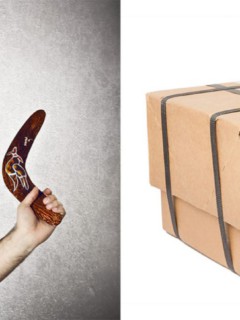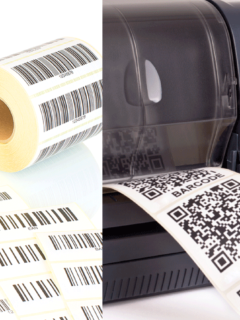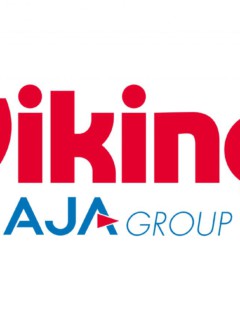Can package tying replace strapping as a durable and sustainable closure technique? Tying and knotting have been used for half a million years. The cord and the knot are among the milestones in human history. Wherever something needs to be joined, held together, bundled or closed: The knot is it! And in all areas, branches, industries: Hunting, textiles, food, medicine, construction, seafaring… Things only become whole with cord. Tying machines are now also “reviving” the cord in packaging and logistics.
The knot is that old
According to wikipedia, humans have been using knots for half a million years. Early structures were built with the help of ropes – and knots. Axes, pile dwellings, snares for catching animals and fishing – all these would be unthinkable without knots. The first known decorative knot was documented by the Assyrians in antiquity in 900 – 609 BC. There are now around 4,000 different types of knot.
From fibre to rope
The idea of bundling the strength of individual threads obtained from plant fibres (e.g. hemp, flax, coconut, sisal, silk or cotton) came early on. The resulting threads, about 2-4 mm thick, were in turn twisted together several times. In this way, depending on the technique and requirements, thick, very resilient ropes were created, suitable for lifting heavy loads. These processes were carried out by hand for thousands of years, refined in the course of history to include aids such as drop spindles (known from “Sleeping Beauty”), suitable for processing tree fibres.
From manual production to industrialisation
Finally, with the invention of the “spinning jenny” in England in 1764, a milestone in industrialisation was reached: with the help of this machine (initially driven by hand, later by steam engines), several yarn spindles could be spun simultaneously. These figures show how successful this was: While Great Britain imported and processed about 1.5 million kilograms of raw cotton in the 1750s, by 1786 the figure was more than 9 million kilograms. The cotton threads thus obtained were largely used for textile processing – but also in households, manufacturing and industry:
The demand for threads, cords and ropes is increasing
Packages are tied up, building materials are bundled, nets are used for hunting and fishing, the roll roast is tied up, rope ladders are made, ropes are used in agriculture and seafaring, in the construction and transport industry and later in leisure (swing ropes, hammocks, climbing ropes…).
Plastic for sealing and bundling
A few decades ago, with rapidly growing demand and increasing demands on resilience, people shifted more and more to the use of synthetic materials. The advantages of plastics were also appreciated for strapping and sealing, bundling and tying. Plastic cable ties are used for bundling, PET or PP stra pping is used for securing, bundling, sealing, stabilising or reinforcing. Plastic strapping has several convincing aspects: Wherever it is a prerequisite that the material is buoyant, acid-resistant or washable, plastic is currently almost without alternative: the age of plastics. Plastic strapping is dimensionally stable, resistant to moisture, UV radiation, temperature fluctuations and certain acids, it is easy to dye during production and incredibly durable.
Well, really UNBELIEVABLY durable. If polypropylene (the world’s most produced plastic after polyethylene) is not properly recycled or sent to waste recycling, PP, as a so-called thermoplastic, is not biodegradable and decomposes into microplastics over many decades.
| Advantages | Disadvantages | Use | |
|---|---|---|---|
| Cotton | comparatively low strength, susceptible to moths | Textiles, cords | |
| Flax | Skipping rope | ||
| Hemp | highest strength among natural fibres | low elongation at break, fibres are coarse and hard, hemp rots only slowly in the open, knots in damp ropes are difficult to undo (compare old mountain ropes in the rain) | Sealing material, tug-of-war, decoration, formerly ropes in rigging |
| Coir | very high abrasion resistance, good elasticity, low dirt absorption, good shock absorption, floatable | Floor mats, tree ties, towing hawsers, former filling material in car headrests | |
| Manilla | tear-resistant, resistant to sea water, lightweight | Ropes in seafaring | |
| Sisal | high tear and abrasion resistance, light and easy to dye, resistant to moisture | Ship ropes, ropes, doormats, nets, carpets, cat scratching posts |
Source: https://de.wikipedia.org/wiki/Seil
| Advantages | Disadvantages | Use | |
|---|---|---|---|
| Polypropylene (PP) | very light (floatable), does not absorb water, chemically resistant to most acids and alkalis, relatively inexpensive, high UV resistance | only equipped abrasion and temperature resistant | Floating line, inexpensive mooring line, all-purpose rope e.g. for construction sites, throwing line |
| Polyamide (PA) | high strength and high elongation at break, i.e. high energy absorption | swells in water, loses strength on contact with water, may become hard, not completely resistant to some acids and UV radiation | Climbing, belaying, high-quality mooring ropes |
| Polyester (PES) | high strength, does not absorb water, very resistant to weathering and most chemicals, very high UV resistance | relatively heavy, low elongation at break | Fire brigade rope |
| High-strength polyethylene (PE) | Polyethylene (PE) “Dyneema”, extremely high breaking strength (5 times that of polyamide), very light (buoyant), does not absorb water, extremely resistant to acids and alkalis | extremely low elongation at break, temperature resistant only up to 70 °C |
Source : https://de.wikipedia.org/wiki/Seil
The disadvantages of plastic strapping as a sealing material
The durability of plastic strapping thus has a clear downside. The dimensional stability of such straps has also driven many a person crazy – when trying to open a package strapped with plastic. But at the latest when trying to dispose of the removed, sharp-edged strapping in the recycling bin: it happily jumps out at you over and over again.
The solution: tying with sisal ropes and cotton cords.
The Siebeck company, founded in 1907 in Eberbach as a producer of sisal ropes, switched to the development, manufacture and sale of lacing machines as early as 1968. For some time rather “under the radar” as a kind of niche product, this type of lacing absolutely meets the spirit of the times: The focus on sustainable solutions in packaging has brought the company a constantly increasing demand, more than 12,000 machines are currently in use worldwide and Siebeck is now the world market leader in strapping technology.
Paper strapping: another ecological alternative to plastic strapping
Made from 95% recyclable kraft paper and 5% vegetable glue, paper strapping is a real ecological revolution for order pickers. It can be used manually or with a semi-automatic strapping machine and offers easy and safe use without risk of injury.
In comparison: strapping vs. strapping
| Strapping | Strapping | |
|---|---|---|
| Plastic-free – 100 % ecological | ✔ | ❌ |
| Difficult geometries | ✔ | ❌ |
| Easy to open | ✔ | ❌ |
| Smooth surfaces | ✔ | ❌ |
| Sensitive products | ✔ | ❌ |
| Material with residual stress can be used | ✔ | ❌ |
| Very small products | ✔ | ❌ |
| Compactly bundled products | ✔ | ❌ |
| Natural look | ✔ | ❌ |
| No tools needed to open | ✔ | ❌ |
| Risk of injury | ✔ | ❌ |
Source: RAJA
How does lacing work?
In terms of functionality and operation, the strapping machines are comparable to a strapping machine. The machines are manufactured in different frame sizes and are therefore adapted to specific package sizes. There is one major advantage in using a strapping machine: while the strapping machine slows down when strapping small packages (the already enclosed strap has to be pulled back), the strapping machine remains equally fast and equally effective even when strapping small packages. In addition, there are almost no physical limits to the size of the tunnel on the strapping machine – the machine is simply built larger. With a strapping machine, the plastic strap can no longer be inserted after a certain size due to the lack of rigidity and stability of the strap.
Is strapping dangerous for the user?
The important thing is: The package must always be positioned and held directly at the knotter unit. There is no risk of injury: the machines are designed for this type of operation and all have the CE mark.
As can be seen in the video, the process is not dangerous for the user:
.Different materials and cord qualities
Here you can choose from a range of materials to suit the product to be tied:
The cotton cord (natural white, but can be dyed as desired), for example, has a tensile strength of approx. 15 kg in the single weave. This value can, however, be increased by using multiple bindings: with a double binding, the value is 30 kg, and if the package is tied three times with cotton cord, the load capacity is 45 kg … In this way, even heavy packages can be carried on the cord without any problems. The force is distributed evenly over the individual cords and thus over a wider area. A not insignificant advantage: the parcel remains intact and cutting into the parcel or hand is prevented.
The recycled cord as an alternative to cotton cord has the same positive product properties, but is made from cord remnants and old textile fibres.
For particularly high demands and thus especially for very heavy or very hard products such as metal, wood or similar, an elastic cord, so-called elastomer, is ideally used for lashing. This contains natural rubber and has a tensile strength of almost 40kg. A certain elasticity allows absolutely tight tying without damage to the packaged goods – which would not be possible with a strapping band.
Applications of a strapping machine
The areas of application are absolutely diverse. Besides the food industry and retail trade, where a lot of strapping is traditionally done (e.g. meat products such as roasts, chicken, roulades…), the machines are just as suitable for the non-food sector (textiles, cables, wood, packages…). The video shows both the mode of operation and the areas of application:
How does a tying machine work?
Tying is a common method in the food industry. Meat products such as chicken, roasts, roulades, etc. are detected fully automatically via light scanners, formed and fixed in the tying machine with pneumatic grippers and, depending on the programming, tied once, twice, three times or even x times.
Tying in the non-food sector
What works for meat also works in the non-food sector:
Tying machines for universal use in various industries close packages 100% naturally, bundle cardboard boxes, textiles, magazines and much more. Completely plastic-free: with the ecological cotton cord, your product can be tied optimally and without plastic, while being sustainable and offering a valuable appearance.
Round, square, soft, hard:
Where other solutions reach their limits, SIEBECK tying machines excel thanks to the flexibility of the ingenious JET unit and the variety of tying materials. Regardless of whether you want to bundle bar goods, ring bundles or small and sensitive products without pressure marks and notches, these tying machines offer a solution for you.
The flexible cotton cord is even excellent for bundling shrubs, cuttings or fruit trees
.Contact
Tying & Bundling Machines















